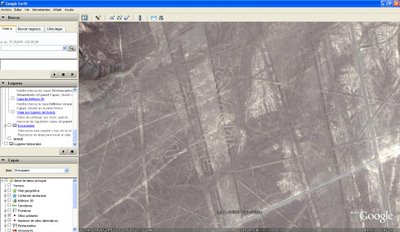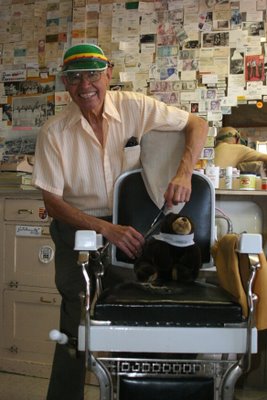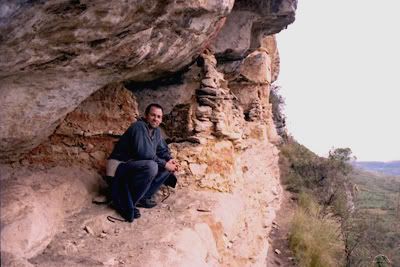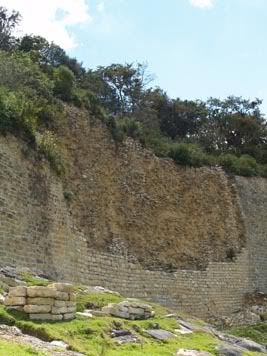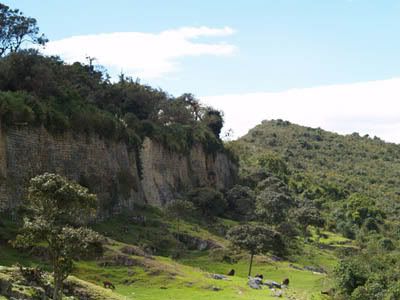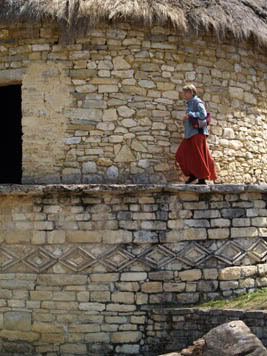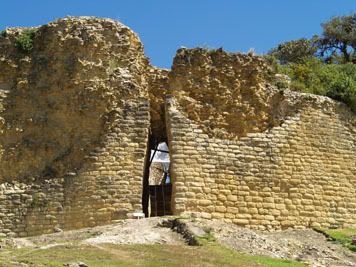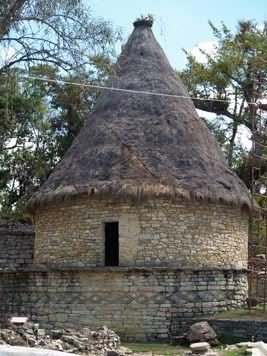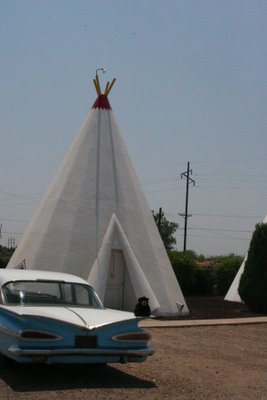
Today we drive through one of the hottest areas of the United States. The Mojave desert is a beautiful but unforgiving environment, not a place to break down on a bike and not have support. In the hottest months (July and August) the temperature can go as high as 128˚ f (53.3˚C) and riding on a motorcycle is like riding a giant electric hair dryer. It’s very easy to get overheated quickly, and heatstroke can be a life-threatening reality. Keeping from getting dehydrated is one of the challenges on a long motorcycle trip. While riding it’s easy to get dehydrated, the problem is that when you sweat, it evaporates almost immediately and you don’t realize it. Getting dehydrated can be dangerous for a rider’s health, and make what should be a enjoyable experience a miserable one. I keep a cooler in the van well-stocked with bottles of ice-cold water, and at every rest-stop check to make sure everyone has adequate water. I also have a supply of Gatoraid powder on hand to mix with the water to keep everyone’s electrolytes balanced. I also encourage everyone to wear a bandanna and dip it in the ice-water in the cooler and wear it while riding. Keeping hydrated is even more essential in the deserts of the southwest, where heatstroke (hyperthermia) can even kill an unwary biker. It usually only takes one really hot day for everyone to realize how important staying cool is.
I also keep a special tool handy for when it is un-bearably hot, a high capacity supersoaker water gun. I drain the water from the melted ice in the cooler to fill it, and hose down anyone that wants it. When it’s 120f+ and the water is 33f it feels great and is so cold, it’s enough to make a big strong man scream like a little girl!
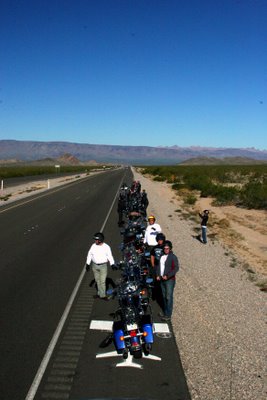
We start our day early to get moving before it gets too horribly hot. We leave the hotel and start over the mountains, stopping for a quick photograph of the desert below. Then it’s back on the bikes for a long ride leaving Nevada behind us and going into our last state on route 66, California.
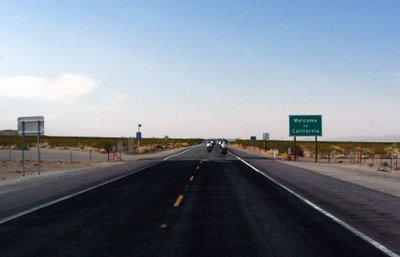


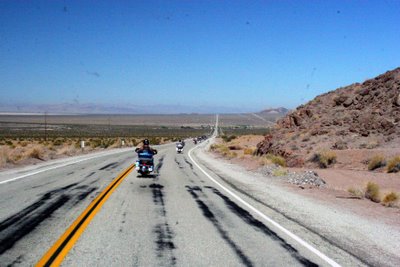
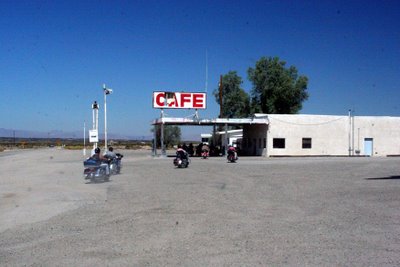
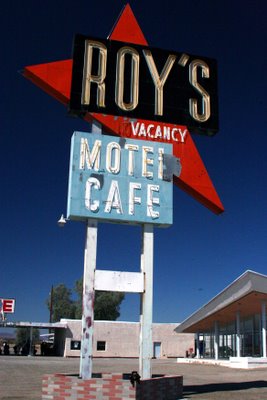
We continue down the route until we come to the small town of Amboy. Not much of a town, it primarialy cosists of a post office, chloride mine, a few small houses and hotel/gas station. The entire town was for sale on ebay last year, and was sold to Albert Okura who is currently attempting to restore it to it’s former glory.Here we stop for a rest break and some water and a quick spray from the water gun. It’s so hot by this time almost everyone opts for the watergun soaking, it’s so hot and dry that after 15 minutes on the bike you’re bone-dry again (now that’s hot)!

Then we get back on the road, passing the extinct volcano, the Amboy crater. Then it’s only about 70 miles for our lunch stop in Barstow. Depending on how hot it is, we either try to make it into town right away, or if it’s just too hot we stop about halfway at the highway rest-area for some more water (drinking and soaking) before we get to town. Once there we have a leisurely lunch because our hotel is only about 40 miles.
After lunch and everyone has had some food, water and air conditioning we get back on the bikes and ride the last 40 miles to our hotel in Victorville.
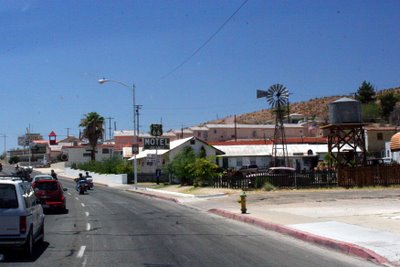
Once we get to the hotel it’s time to unpack the van, change into our swimwear and hit the cool water of the pool. We usually get in early because of the early start time and short distance, so we have plenty of time to enjoy the pool.
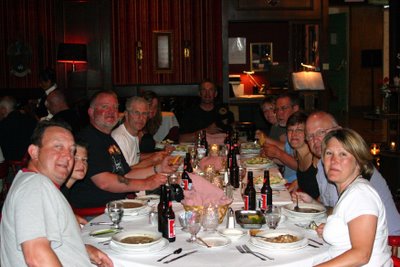
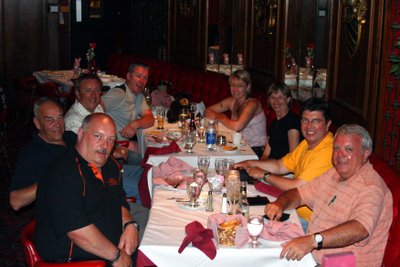
This is also where we have our farewell dinner in the hotel resturaunt. During dinner we have a great time discussing our favorite parts of the route, things we’ve seen and just generally have a good time. After we eat it’s time for Stuart and Gary to give a brief speech about the tour, go over some of the best (and worst) parts of the trip and thank everyone for coming along.

After dinner we got to the hotel bar for a few drinks and conversation before we go to bed, to get rested and ready for the ride into the worst traffic nightmare in the United States, Los Angeles.



